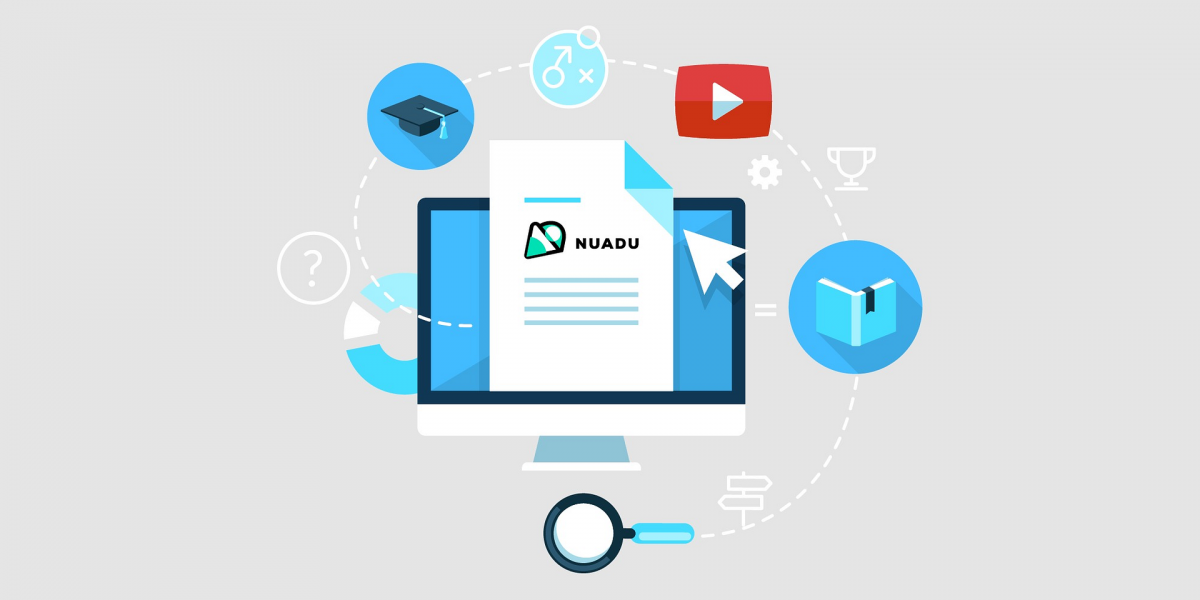One of the main advantages of digital educational tools is their ability to process massive amounts of data in seconds to produce exactly what the teachers need — just-in-time actionable insights about each and every student based on objective data. With the right tools, nothing is left to guesswork.
At NUADU, we appreciate the challenges currently facing educators.
With overcrowded classrooms and limited time to cater to every student’s needs, teachers have no choice but to rely on technology to boost their efficiency and effectiveness. But which digital solutions are most well positioned to support teachers in their quest to support students?
One of the main advantages of digital educational tools is their ability to process massive amounts of data in seconds to produce exactly what the teachers need — just-in-time actionable insights about each and every student based on objective data. With the right tools, nothing is left to guesswork.
This is why at NUADU, we believe in data-driven education — using data to empower all the stakeholders in the educational process. We know how impactful a data-driven approach to education can be and that’s why we are now sharing our platform with educators and students around the world.
That’s how we do it
Managing educational data is extremely challenging and requires an efficient and well-designed platform — ideally, a platform capable of processing data about all aspects of the educational process.
At NUADU we used data to:
- Create a personal learning and assessment environment for every student [LEARNING ANALYTICS & DIGITAL ASSESSMENT];
- Provide teachers with insights into their students’ educational needs and the tools needed to address these needs just in time [DATA-DRIVEN INSTRUCTION];
- Allow authorities to monitor engagement and effectiveness at the school and district levels [EDUCATIONAL PERFORMANCE MONITORING];
- Help publishers control content quality based on its usability [CONTENT PERFORMANCE ANALYTICS];
- Give parents an objective picture of their child’s progress [PARENTAL ENGAGEMENT].
Teacher
I never teach my pupils. I only attempt to provide the conditions in which they can learn.
Albert Einstein
DATA-DRIVEN INSTRUCTION
In the past, tracking the performance of dozens and even hundreds students throughout the school year and across grade levels was impossible. It was also impossible to adjust the learning environment to meet each student’s specific needs. NUADU offers a solution.
With NUADU educational data about every student is not only stored but also analysed to enable teachers to:
- See and compare every student’s performance for selected subjects, classes, and groups in a given time period;
- React just in time to address the needs of students who are at-risk by giving them extra practice (e.g., the suggested training sets contain variants of 10 exercises with the lowest score received by the selected group of students);
- See which exercises are too easy or too difficult for selected students, groups, and classes to adjust the difficulty of subsequent homework assignments;
- Differentiate and indivdualize instruction on the basis of student results to address students’ needs more accurately;
- View student results by activities, topics, and curriculum objectives and goals to monitor progress and make adjustments as needed;
- Adjust the difficulty level and the type of exercises assigned to groups and individual students based on performance;
- View all attempts and time spent on activities by students and add comments, in line with formative assessment methods, to help students overcome difficulties;
- Download all the reports as Excel or PDF files.
With NUADU’s tools, teachers can automate many ongoing tasks and leverage data-based insights to more effectively mentor students.
Student
Achieve greatness.
NUADU
LEARNING ANALYTICS & DIGITAL ASSESSMENT
In the world of pens and paper, students rarely receive valuable feedback when they need it. This is because summative assessments (e.g., final exams) still reign over formative assessments (e.g., mid-unit diagnostic assignments). Moreover, despite being increasingly aware of their learning preferences, most students still lack the agency needed to manage their learning process. Students live in the digital world but most schools still reflect the learning conditions of the analogue world.
NUADU data allows students to:
- Scan exercises to be completed and to filter this information by deadline, ensuring that no homework assignment is ever missed;
- Immediately view their results for every exercise and activity;
- Feel gratification when they perform well and motivation when they need extra practice;
- View their results and progress graphs by subject and activity type in a selected time period to assess how they have improved over time;
- Act upon the results by selecting self-practice exercises and receive instant feedback to see the effects of their effort;
- Keep track of all exercises throughout the school year and across grades to see the big picture (the “what I have learned”);
- See the real-world application of what they learn by keeping track of the cognitive and employability skills they have developed (the “why I am learning this”).
In NUADU’s data-driven learning environment, digital resources, analytics, and formative assessment tools enable students to become self-reliant learners. Students benefit from personalization and immediate feedback.
Parent
Never help a child with a task at which he feels he can succeed.
Maria Montessori
All parents would sleep better if they knew that their child had access to the tools needed to be an independent learner. At the same time, most parents would also sleep better knowing that their child was actually making good use of their digital devices and Internet access.
NUADU offers parents the possibility to:
- Monitor their child’s results per specific exercise, activity, topic, curriculum objective and goal, and subject in real time;
- Keep track of all their child’s progress throughout the school year and across grades to track their progress over time;
- See the real-world application of what their child is learning (e.g., what cognitive and employability skills their child is developing);
- Set goals for their child and receive notifications about their child’s progress.
With NUADU parents can stay up-to-date on their child’s educational progress on a daily basis or the system can notify parents only if and when their child is lagging behind.
Principal
Headmasters have powers at their disposal with which Prime Ministers have never yet been invested.
Winston Churchill
EDUCATIONAL PERFORMANCE MONITORING
In many schools, annual exam results and periodical staff meetings are the only source of data a principal has to make long-term decisions about staffing, resource allocation, and the curriculum. In the most innovative schools, administrators cite data-driven instruction as one of the most important practices contributing to their success.
With NUADU, principals can:
- View activity logs of all the students and teachers in a given school;
- View activity reports, which include the number of activity sets assigned and median student results;
- Review insights on the platform’s knowledge base;
- Access live reports for selected students and subjects;
- See comparable statistics for all users in the school;
- Generate reports as PDF files.
With NUADU, educational performance monitoring becomes easy and the ongoing control allows principals to make the right decisions at the right time.
Local authorities
An investment in knowledge pays the best interest.
Benjamin Franklin
The responsibility of allocating educational funds to yield the best results can be daunting, especially if decisions are driven by a single source of feedback — exam results.
NUADU offers local authorities real-time access to:
- Reports on the number of student, teacher, and headmaster logins in time;
- Statistics on the number of assigned and completed activities per district and school;
- Data on the effectiveness of the educational process based on student activity results.
At NUADU, we believe transparency is essential. By offering instant access to actionable real-time data, with NUADU, local school authorities can make informed decisions more quickly.
Publisher
Content is King.
Bill Gates
CONTENT PERFORMANCE ANALYTICS
With NUADU, it is easier than ever to separate quality digital content from poor content.
Data collected by NUADU can be used to:
- Monitor how frequently the publisher’s educational resources are used and in what context (e.g., lessons, homework, tests, and self-training);
- Compare the proposed and actual difficulty level of each item by analysing the number of attempts at a task, time spent on it by students, and its completed versus abandoned rate;
- Discover which competencies (e.g., cognitive skills and employability skills) are developed most using a specific publisher’s content;
- Improve content by collecting teacher’s feedback;
- Infer which areas are most problematic for students and make business decisions about content strategy.
These insights combined with NUADU’s content creator tool can help eliminate or refine poor content.
Conclusion
Our mission to harness data in the service of education is not yet complete. At NUADU, we continue to analyze usage data, talk to users around the world, and assess the obstacles that prevent our users from reaching their peak performance. Equipped with this knowledge and driven by a passion to make learning more effective for every student, we are constantly upgrading our platform. In NUADU’s ideal world, every teacher would have more time to mentor students and every student would spend more time realizing their educational goals.
About the Author: Malwina Otto – UX designer with 10+ years of professional experience in Ed-Tech, hoping to see how AI transforms education. Product / UX Designer at NUADU.


